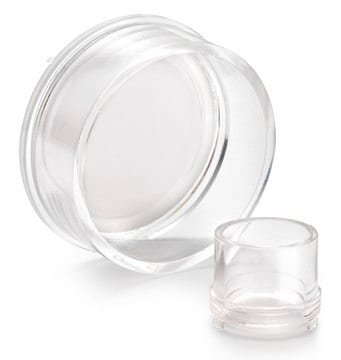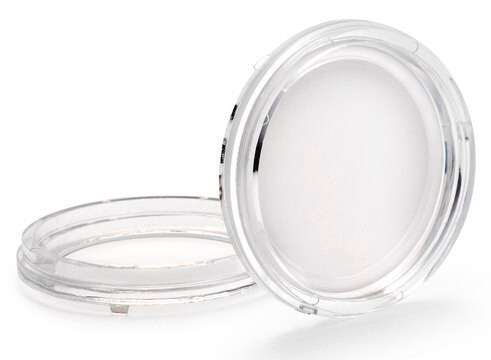PIHP01250
Millicell® Standing Cell Culture Inserts
pore size 0.4 μm, diam. 12 mm, translucent polycarbonate membrane, Tissue Culture (TC)-treated surface, size 24 wells, sterile
Synonym(s):
Millicell Cell Culture Insert, 12 mm, polycarbonate, 0.4 µm, Millicell-PCF, cell culture inserts, permeable culture insert, plate inserts, tissue culture insert, tissue culture plate
About This Item
Recommended Products
material
polystyrene housing
translucent polycarbonate membrane
Quality Level
sterility
γ-irradiated
sterile
feature
hydrophilic
100x106 pores/cm2 (pore density)
packaging
pack of 50
manufacturer/tradename
Millicell®
parameter
50 °C max. temp.
technique(s)
cell attachment: suitable
cell culture | mammalian: suitable
cell differentiation: suitable
drug transporter assay: suitable
permeability assay: suitable
H
10.5 mm
diam.
12 mm
size
24 wells
surface area
0.6 cm2
working volume
0.6 mL
color
translucent
matrix
Isopore™
pore size
0.4 μm pore size
binding type
Tissue Culture (TC)-treated surface
shipped in
ambient
General description
With Millicell® inserts, attachment or suspension cells can access media from both their apical and basolateral sides. Cell growth, structure, and function more closely mimic what occurs in vivo. In addition, Millicell® inserts make it possible to study both sides of the cell monolayer.
Millicell® Standing Inserts:
- Promotes excellent cell growth and provides an exceptional opportunity for cell studies
Membrane Type:
Isopore Membrane (polycarbonate)
- For growth of attachment-dependent cells without matrix
Applications
Cell Attachment, Cell Growth, Cell Differentiation , Immunocytochemistry
Legal Information
Storage Class Code
10-13 - German Storage Class 10 to 13
Certificates of Analysis (COA)
Search for Certificates of Analysis (COA) by entering the products Lot/Batch Number. Lot and Batch Numbers can be found on a product’s label following the words ‘Lot’ or ‘Batch’.
Already Own This Product?
Find documentation for the products that you have recently purchased in the Document Library.
Customers Also Viewed
Articles
16HBE14o- human bronchial epithelial cells used to model respiratory epithelium for the research of cystic fibrosis, viral pulmonary pathology (SARS-CoV), asthma, COPD, effects of smoking and air pollution. See over 5k publications.
16HBE14o- human bronchial epithelial cells used to model respiratory epithelium for the research of cystic fibrosis, viral pulmonary pathology (SARS-CoV), asthma, COPD, effects of smoking and air pollution. See over 5k publications.
Protocols
Toluidine blue selectively stains nuclear material and acidic tissue components, aiding in histological staining for tissues rich in DNA/RNA.
Toluidine blue selectively stains nuclear material and acidic tissue components, aiding in histological staining for tissues rich in DNA/RNA.
Toluidine blue selectively stains nuclear material and acidic tissue components, aiding in histological staining for tissues rich in DNA/RNA.
Toluidine blue selectively stains nuclear material and acidic tissue components, aiding in histological staining for tissues rich in DNA/RNA.
Our team of scientists has experience in all areas of research including Life Science, Material Science, Chemical Synthesis, Chromatography, Analytical and many others.
Contact Technical Service







